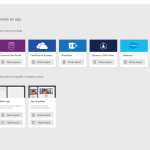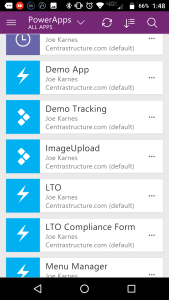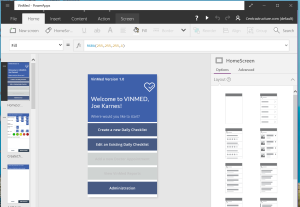In this series of blogs, we explore key capabilities in Office 365 and SharePoint to create business solutions, with a focus on PowerApps.
Instead of listing functionalities, we help you build a PowerApp.
Part seven of a series.
Lately, I’ve heard from a lot of people:
“I’ve heard about Microsoft PowerApps, but what is it? What does it do? What doesn’t it do? Do I already have it? If so, is it tough to use?”
PowerApps was just released live in January 2017, and while people are starting to hear the name more, I don’t think there is an easy primer on what it can do for companies, or why they should even care.
Are you using Microsoft Office 365 to the fullest?
Learn more about successfully integrating all the features of Office 365 into your business to produce positive results.
Here’s a nice and “simple” explanation on PowerApps:
PowerApps: Easy Business Apps for Mobile Devices
PowerApps at its core is a Platform as a Service. It allows you to create Mobile Apps that run on Android, iOS, Windows (Modern Apps) – and with almost any Internet browser.
PowerApps is also a mobile app! Historically, mobile app development has involved creating apps for each operating system they need to run on (one for iOS, one for Android, one for Windows). This essentially triples your development work, triples your support costs, and increases the development resources you need to create business apps.
With PowerApps Mobile Apps, all of the PowerApps you create run through the PowerApp App. It takes care of the differences between the operating systems and just allows you to run your apps. It is essentially a container that makes mobile apps much easier to use across mobile platforms.
There is also a web version of PowerApps. It’s the same concept but runs through any modern web browser instead of a mobile app. It’s this simple:
1. First, tap the PowerApps icon on your Phone.

2. Then, tap the Published App to run it!

What Does PowerApps Do?
PowerApps provides a nice drag-and-drop user interface to allow you to add different controls (i.e. text field, choice field), media (images, video, camera controls for your phone), forms, and screens to construct a mobile app.
It also allows you to connect to external data sources or store data directly inside the app. Once you have created an app, all you have to do is publish it and share it with your organization.
I realize that’s a very simplistic definition of PowerApps, but I did promise a simple primer!
How do I Make a PowerApp?
Making a PowerApp can range from simple to complex, but everything is created through either the PowerApp Windows Modern App on a Windows 8.1 or Windows 10 device. Or through its web designer, which can be run through any modern web browser:

What doesn’t it do?
You might be thinking, “I like the concept, but what’s the catch?”
PowerApps was designed to be used for BUSINESS Mobile Apps – meaning internal use. You’re not going to create a PowerApp to share with everyone in the world. These are not designed for consumer consumption, mostly due to the licensing model, as well as technical limitations with sharing with external users.
Also, all of the functionality in PowerApps is “no-code.” So your in-house developers won’t be able to add any custom HTML or JavaScript or do any hack-y things to the underlying device. If PowerApps can’t access anything external to it, then neither can your users or your developers.
While it sounds like a limitation, it can also be a good thing. Restricting rogue code from your PowerApps will allow the platform to maintain stability and ease-of-use for the long-term. If you need custom business logic that PowerApps just cannot provide, you can connect to any custom REST API with PowerApps to get the best of both worlds.
Lastly, PowerApps functionality may not meet your exact requirements for what you are looking to do with your mobile apps today. But because this is a cloud-oriented service, you can be sure that Microsoft will regularly release new updates, features, and enhancements.
Make your voice heard – and let Microsoft know the things you would like the product to do. They are listening!
Do I have PowerApps? Is it tough to create and use Apps?
Good news is: If you have an Office 365 Enterprise E1 or above subscription, you have PowerApps!
Does that mean you have every feature of PowerApps? Not necessarily. Check the licensing page for PowerApps here to see all of the different license levels, features included with each license, and how to get a-la-carte licenses if you don’t have Office 365.
When it comes to whether it’s easy to create or not, it’s like everything else: It just depends. You can opt for simple PowerApps that are really easy to create or you can go for ridiculously complex PowerApps that require a greater knowledge curve.
Do you need to have coding experience in JavaScript, HTML, or C#? Nope. Do you need to write formulas to describe your logic? Yes.
However, PowerApps formulas were designed using Excel formulas to allow business users the ease of creating formulas for this logic. While not perfect, it is actually fairly simple to learn.
As time goes by, I would like to see Microsoft really develop more examples and documentation. But for a product that was just released earlier this year, they have done a reasonable job with their documentation on Powerapps.com.

